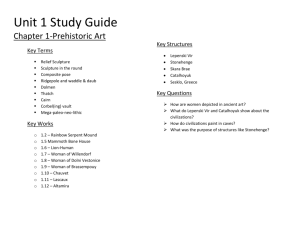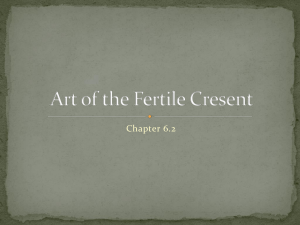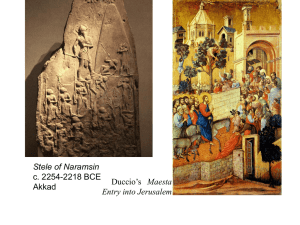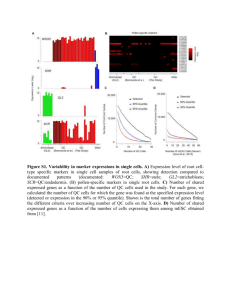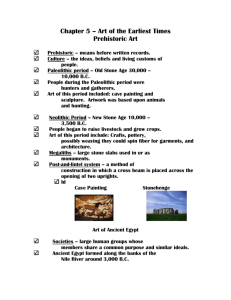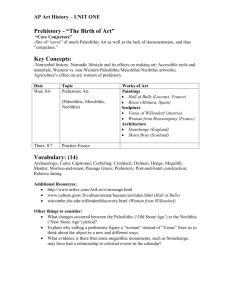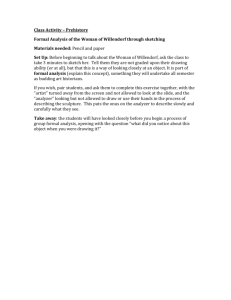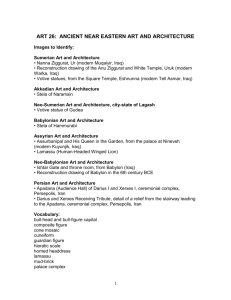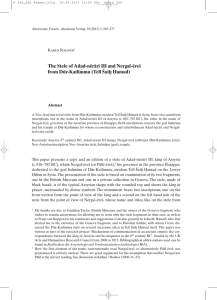AP Art History
advertisement
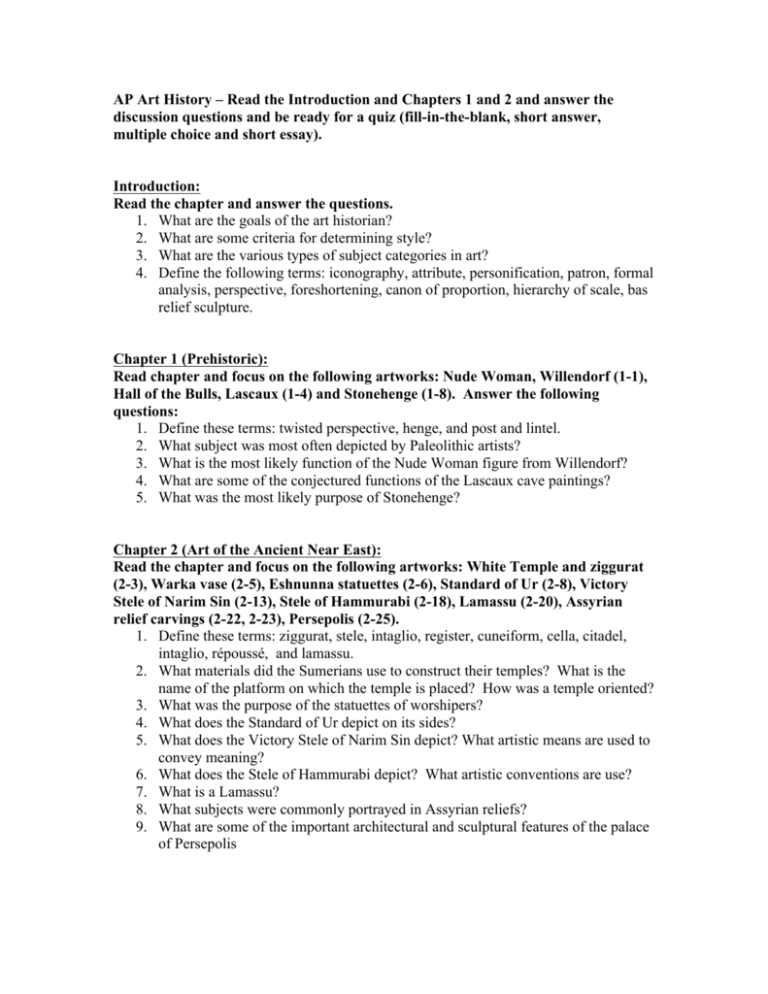
AP Art History – Read the Introduction and Chapters 1 and 2 and answer the discussion questions and be ready for a quiz (fill-in-the-blank, short answer, multiple choice and short essay). Introduction: Read the chapter and answer the questions. 1. What are the goals of the art historian? 2. What are some criteria for determining style? 3. What are the various types of subject categories in art? 4. Define the following terms: iconography, attribute, personification, patron, formal analysis, perspective, foreshortening, canon of proportion, hierarchy of scale, bas relief sculpture. Chapter 1 (Prehistoric): Read chapter and focus on the following artworks: Nude Woman, Willendorf (1-1), Hall of the Bulls, Lascaux (1-4) and Stonehenge (1-8). Answer the following questions: 1. Define these terms: twisted perspective, henge, and post and lintel. 2. What subject was most often depicted by Paleolithic artists? 3. What is the most likely function of the Nude Woman figure from Willendorf? 4. What are some of the conjectured functions of the Lascaux cave paintings? 5. What was the most likely purpose of Stonehenge? Chapter 2 (Art of the Ancient Near East): Read the chapter and focus on the following artworks: White Temple and ziggurat (2-3), Warka vase (2-5), Eshnunna statuettes (2-6), Standard of Ur (2-8), Victory Stele of Narim Sin (2-13), Stele of Hammurabi (2-18), Lamassu (2-20), Assyrian relief carvings (2-22, 2-23), Persepolis (2-25). 1. Define these terms: ziggurat, stele, intaglio, register, cuneiform, cella, citadel, intaglio, répoussé, and lamassu. 2. What materials did the Sumerians use to construct their temples? What is the name of the platform on which the temple is placed? How was a temple oriented? 3. What was the purpose of the statuettes of worshipers? 4. What does the Standard of Ur depict on its sides? 5. What does the Victory Stele of Narim Sin depict? What artistic means are used to convey meaning? 6. What does the Stele of Hammurabi depict? What artistic conventions are use? 7. What is a Lamassu? 8. What subjects were commonly portrayed in Assyrian reliefs? 9. What are some of the important architectural and sculptural features of the palace of Persepolis
